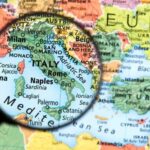What are the travel restrictions in Italy? As the world continues to navigate the challenges of the COVID-19 pandemic, travel to and within Italy has been significantly impacted. Understanding the current travel situation in Italy is essential for anyone considering a trip to this popular destination. From entry requirements to quarantine protocols, there are important factors that travelers need to be aware of in order to have a successful and safe journey.
The impact of COVID-19 on travel has been widespread, and Italy is no exception. The country has implemented specific travel restrictions in response to the pandemic, affecting both tourists and residents alike. These restrictions aim to mitigate the spread of the virus while still allowing for essential travel and tourism. It’s crucial for anyone planning a trip to Italy to be well-informed about these regulations in order to avoid any potential disruptions or complications during their visit.
In this article, we will delve into the various aspects of travel restrictions in Italy, including entry requirements, quarantine protocols, and limitations on domestic travel. By understanding these key components, travelers can better prepare for their trip and ensure compliance with local regulations for a safe and enjoyable experience. Stay informed about the latest updates and changes in travel restrictions as we provide helpful tips for navigating these regulations effectively.
COVID-19 and the Impact on Travel
The COVID-19 pandemic has had a significant impact on travel to Italy, leading to various restrictions and guidelines for tourists. As of now, Italy is open to travelers from some countries, but there are specific requirements and limitations in place to ensure the safety of both visitors and residents. Due to the evolving nature of the situation, it’s essential for anyone planning a trip to Italy to stay informed about the latest travel restrictions.
Tourists entering Italy from certain countries are currently required to present a negative COVID-19 test result taken within a specified timeframe before arrival. Additionally, travelers may be subject to quarantine or testing upon entry, depending on their country of origin and vaccination status. These measures are designed to prevent the spread of the virus and protect public health within Italy.
It’s important to note that travel restrictions in Italy can change frequently in response to the evolving situation with COVID-19. Visitors should regularly check for updates from reliable sources such as local government websites or official travel advisories. By staying informed and following the guidelines set forth by Italian authorities, travelers can ensure a safe and enjoyable experience while visiting this beautiful country.
| Italy Travel Restrictions | Details |
|---|---|
| COVID-19 Testing | Travelers from certain countries need to present a negative COVID-19 test result |
| Quarantine Protocols | Quarantine or testing upon entry may be required based on country of origin and vaccination status |
Travel Restrictions for Tourists
Italy has implemented various travel restrictions in response to the COVID-19 pandemic, impacting both domestic and international travelers. For tourists planning to visit Italy, it is essential to understand the specific limitations and guidelines that are currently in place.
As of now, Italy has classified countries into different categories based on their COVID-19 risk level. Travelers arriving from European Union (EU) countries, Schengen Area countries, the United Kingdom, and certain other countries are allowed to enter Italy for tourism purposes without the need for quarantine. However, travelers from other countries may face stricter entry requirements and quarantine measures.
In addition to these country-specific restrictions, all travelers entering Italy must also adhere to testing and documentation requirements. This typically includes presenting a negative COVID-19 test result taken within a specific timeframe before arrival and completing a self-declaration form. Failure to comply with these requirements can result in denied entry or mandatory quarantine periods.
Given the rapidly changing nature of the pandemic, it is crucial for tourists to stay updated on the latest travel restrictions in Italy. This includes monitoring official government sources, consulting with airlines or travel providers, and remaining flexible with travel plans in case of sudden changes. Being well-informed about these regulations will help ensure a smoother and more enjoyable travel experience in Italy.
| Specific Restrictions | Details |
|---|---|
| Countries Allowed for Tourism | EU countries, Schengen Area countries, UK, and others |
| Entry Requirements | Negative COVID-19 test result, self-declaration form |
| Monitoring Sources | Official government websites, airlines/travel providers |
Entry Requirements
Since the onset of the COVID-19 pandemic, Italy has implemented various travel restrictions to control the spread of the virus. As a result, there are specific entry requirements for individuals planning to visit Italy. These entry requirements include documentation and testing that must be completed before arrival in the country. It is essential for travelers to understand and adhere to these requirements to ensure a smooth entry into Italy.
Travelers entering Italy are required to present a negative COVID-19 test result conducted within 72 hours prior to their arrival. This PCR or antigen test is mandatory for all visitors, regardless of their vaccination status. Additionally, travelers may also be subject to health screenings upon arrival at Italian airports or border checkpoints. It is crucial for visitors to familiarize themselves with these testing requirements and plan accordingly before their trip.
In addition to testing, travelers must also complete a self-declaration form before entering Italy. This form includes personal information, travel details, and a declaration regarding one’s health status and recent travel history. Failure to provide accurate information on this form could result in denied entry into the country.
Therefore, it is important for travelers to carefully fill out this form and ensure that they have met all necessary documentation and testing requirements before traveling to Italy. Overall, understanding the documentation and testing required for entry into Italy is essential for all visitors in order to comply with the country’s travel restrictions and regulations.
As per the outline provided about “What Are the Travel Restrictions in Italy“, this section provides detailed information about the specific entry requirements including documentation needed by tourist such as self-declaration forms and COVID-19 negative test results that are mandatory irrespective of vaccination status when traveling into Italy.
Quarantine and Testing Protocols
As of the current situation, Italy has implemented several travel restrictions in response to the COVID-19 pandemic. These measures have greatly impacted travel to and within the country, making it essential for visitors to be aware of the protocols and guidelines in place. One of the key aspects of these restrictions is the quarantine and testing procedures for travelers to Italy.
For individuals entering Italy, it is important to note that there are specific entry requirements regarding documentation and testing. As per the current guidelines, travelers from certain countries may be required to present a negative COVID-19 test result upon arrival. Additionally, some visitors may also need to complete a period of quarantine upon entering the country. It is crucial for travelers to stay updated on these requirements and ensure compliance before embarking on their trip.
In terms of quarantine and testing protocols, travelers should be prepared for potential isolation measures upon arrival in Italy. The duration and specific requirements for quarantine may vary depending on factors such as vaccination status and recent travel history. Moreover, individuals entering Italy may also be subjected to additional testing during their quarantine period as a precautionary measure. Therefore, it is essential for travelers to thoroughly understand these protocols and plan accordingly to avoid any disruptions during their trip.
In order to navigate the quarantine and testing procedures effectively, it is advisable for travelers to stay informed about any updates or changes to the regulations in place. Given the evolving nature of the pandemic, it is important to regularly check for new guidelines and adjustments that may affect travel restrictions in Italy. By staying vigilant and proactive, visitors can ensure a smoother experience while adhering to the necessary protocols for safe travel within the country.
Travel Within Italy
Regional Restrictions
Currently, Italy is divided into different regions, each with its own specific measures and regulations in place to control the spread of COVID-19. It’s essential for travelers to be aware of these regional restrictions before planning any internal travel within Italy. Some regions may have stricter measures in place, including limitations on movement and gatherings, so it’s important to check the latest guidelines for each specific area.
Public Transportation
When traveling within Italy, tourists should also be mindful of the restrictions and safety protocols in place for public transportation. This includes wearing face masks at all times while using public transit and adhering to any capacity limits or social distancing guidelines that may be in effect. Travelers should also familiarize themselves with any specific requirements or regulations set by individual transportation providers, such as train companies or bus services.
Accommodation and Services
In addition to transportation, travelers should consider the limitations and guidelines related to accommodation and services within Italy. Hotels, restaurants, and other tourism-related businesses may have their own set of restrictions and safety protocols that must be followed by visitors. It’s important for travelers to research and understand these requirements before making any reservations or plans for their trip within Italy.
As always, staying informed about what are the travel restrictions in Italy is crucial for a safe and enjoyable travel experience. By remaining aware of regional limitations, adhering to public transportation guidelines, and understanding accommodation restrictions, travelers can navigate their journey through Italy while prioritizing safety for themselves and others.
Updates and Changes
Travel restrictions in Italy, like in many other countries, have been continuously evolving in response to the ongoing COVID-19 pandemic. It is important for travelers to stay informed about the latest updates and any changes to travel restrictions in Italy in order to ensure a smooth and hassle-free trip. Here are some key points to keep in mind when staying updated on travel restrictions:
- Regularly check official government websites, such as the Ministry of Foreign Affairs or the Italian National Tourist Board, for the latest information on travel restrictions and entry requirements.
- Sign up for travel advisory alerts from your home country’s embassy or consulate in Italy to receive timely updates on any changes to travel regulations or safety guidelines.
- Follow reputable news sources and travel blogs that provide reliable updates on international travel, including specific details related to Italy’s travel restrictions and protocols.
Staying informed about the latest updates regarding travel restrictions in Italy is crucial, as guidelines can change frequently based on the current health situation. By staying proactive and well-informed, travelers can better prepare for their trip and avoid any potential disruptions.
It is also important to stay connected with airlines, accommodations, and any booked attractions or activities within Italy, as they may have specific protocols or requirements for travelers. Being aware of these updates can help prevent any unforeseen obstacles during your visit.
By staying updated on not only the national regulations but also regional variations within Italy itself, travelers can better understand what to expect and how to navigate their journey within the country. It is advisable to remain flexible and open-minded when planning a trip to Italy amid changing travel restrictions in order to minimize stress and maximize enjoyment.
Tips for Travelers
As the world navigates the ongoing impact of the COVID-19 pandemic, it is important for travelers to stay informed about the current travel restrictions in Italy. Navigating these restrictions can be daunting, but with the right knowledge and preparation, it is possible to have a safe and enjoyable trip to this beautiful country.
Stay Updated on Entry Requirements
It is crucial for travelers to stay updated on the entry requirements for Italy. This includes understanding the specific documentation and testing required for entry into the country. As regulations and guidelines may change frequently, it is recommended to regularly check official government websites and consult with the Italian consulate or embassy in your home country.
Adhere to Quarantine and Testing Protocols
Travelers must also familiarize themselves with quarantine and testing protocols in Italy. Depending on the traveler’s country of origin and current health status, there may be specific requirements for quarantine upon arrival as well as additional testing procedures. It is essential to comply with these protocols in order to ensure the safety of oneself and others.
Respect Local Guidelines
Once within Italy, it is important for travelers to respect local guidelines and restrictions. Different regions within the country may have varying rules in place regarding social distancing, mask-wearing, and capacity limits for businesses and public spaces. By staying informed about these guidelines and adhering to them, travelers can contribute to the overall safety of their surroundings.
By following these tips and staying informed about travel restrictions in Italy, travelers can navigate their trip with confidence while prioritizing safety. It is essential to be flexible and prepared for potential changes, but with careful planning, it is still possible to experience all that Italy has to offer while respecting public health measures.
Conclusion
In conclusion, it is vital for travelers to stay informed and adhere to the guidelines set forth by the Italian government when planning a trip to Italy. The impact of COVID-19 has significantly altered the travel landscape, and it is crucial for visitors to understand and comply with the travel restrictions in place. As discussed, entry requirements, quarantine protocols, and limitations on travel within Italy all play a role in ensuring the safety of both residents and tourists.
Staying updated on the latest changes and developments regarding travel restrictions in Italy is essential for anyone considering a trip to the country. With regulations subject to change based on the evolving nature of the pandemic, travelers must remain vigilant in monitoring updates from reliable sources. This will help ensure that their travel plans align with any new requirements or restrictions that may be put in place.
In addition to staying informed about travel restrictions in Italy, travelers should also take proactive measures to prepare for their trip. Researching entry requirements, obtaining necessary documentation, and familiarizing themselves with testing procedures will contribute to a smoother and more secure travel experience. By being well-informed and following guidelines, visitors can help minimize risks while enjoying all that Italy has to offer.
Frequently Asked Questions
Are There Any Travel Restrictions to Italy?
As of now, there are travel restrictions in place for travelers going to Italy from the United States. These restrictions include mandatory testing and quarantine upon arrival.
What Is Required for a US Citizen to Visit Italy?
For a US citizen to visit Italy, they would need a valid passport with at least three months of validity beyond their planned date of departure from the Schengen area. Additionally, they may need a visa for stays exceeding 90 days.
What Is the Current Travel Advisory Level for Italy?
The current travel advisory level for Italy varies based on the region and is subject to change due to COVID-19. As of now, some regions have varying levels of advisory due to pandemic-related concerns, so it’s important to check for updates before planning a trip.

I’m a passionate traveler, writer, and Italophile. My fascination with Italy’s history, art, and culture has led me on countless adventures across the Italian landscape. Through “I Live Italy,” I share my love for this extraordinary country and aims to inspire others to explore its boundless beauty.





